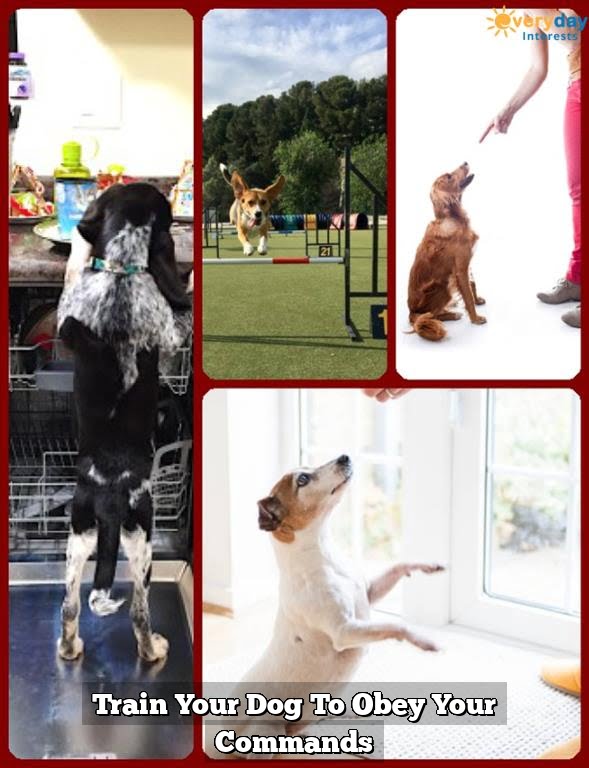Are you looking to improve your communication with your furry friend? Voice training your dog can be a game-changer in building a strong bond and clear understanding between you and your pet. In this article, we will delve into the importance of voice training for dogs, the benefits it brings, and tips on how to get started.
Voice training is a vital aspect of dog training as it helps in establishing clear communication and understanding between you and your four-legged companion. By teaching your dog to respond to verbal cues, you can prevent behavioral issues, enhance obedience, and create a harmonious relationship based on trust and respect.
In the following sections, we will explore the benefits of voice training, getting started with choosing the right commands and tone of voice, as well as mastering advanced techniques for effective communication. Additionally, we will also cover common mistakes to avoid when voice training your dog and how to troubleshoot any challenges that may arise along the way. Let’s dive into the world of voice training and celebrate the progress that comes with it.
Benefits of Voice Training
Enhanced Communication
Voice training your dog not only teaches them to respond to specific verbal commands, but it also strengthens the communication between you and your furry friend. By using consistent commands and tone of voice, you can effectively convey your expectations to your pet and build a strong bond based on mutual understanding. This clear communication can lead to a more harmonious and enjoyable relationship with your dog.
Improved Obedience
When you voice train your dog, you are essentially teaching them to obey your verbal cues. This not only helps in managing their behavior, but it also promotes a sense of trust and respect between you and your pet. As a result, voice training can contribute to a well-behaved dog who understands and follows your commands, creating a positive impact on their overall behavior.
Bonding Experience
Voice training sessions with your dog provide an opportunity for quality bonding time. Through regular practice and positive reinforcement, you can strengthen the emotional connection with your pet while fostering a sense of teamwork. This shared experience of learning and growing together can deepen the bond between you and your dog, resulting in a more fulfilling companionship.
Getting Started
Understanding the Importance of Commands and Tone
When it comes to voice training your dog, choosing the right commands and tone of voice is crucial. Dogs respond best to consistent, clear commands and a positive, encouraging tone. It’s important to understand that dogs perceive our tone and body language more than the actual words we say. This means that using a harsh tone or showing frustration can confuse your dog and make it harder for them to understand what you want from them.
Choosing the Right Commands
Before you start voice training your dog, take the time to decide on the specific commands you will use. Keep these commands short and easy to differentiate from one another. For example, “sit,” “stay,” “come,” “heel,” and “down” are common commands that are easy for dogs to distinguish. Once you’ve chosen your commands, stick with them and avoid mixing in different words for the same action, as this can lead to confusion for your dog.
Setting the Right Tone of Voice
In addition to choosing the right commands, paying attention to your tone of voice is equally important when voice training your dog. Using a calm, firm, and upbeat tone when giving commands can help convey positivity and assertiveness to your dog.
Consistency in your tone is also key – if you use a different tone each time you give a command, your dog may struggle to understand what is being asked of them. Remember that patience is key when voice training your dog – consistency in both commands and tone will go a long way in helping your furry friend understand what you want from them.
The Basics
Teaching your dog to respond to verbal cues is an essential part of voice training. This is where you will lay the foundation for effective communication with your furry friend. The key to success in this area is consistency and patience.
One of the first steps in teaching your dog to respond to verbal cues is choosing the right commands and tone of voice. It’s important to keep your commands simple and easy for your dog to understand. Use a firm, but gentle tone when giving commands, and avoid shouting or using aggressive tones as this can create confusion and fear in your dog.
Once you have selected your commands and tone of voice, it’s time to start training. Begin with basic commands such as “sit,” “stay,” and “come.” Use treats or positive reinforcement to encourage your dog to respond to these verbal cues. Repeat the commands consistently, and be sure to praise and reward your dog when they respond correctly.
| Teaching Your Dog | Responding Verbal Cues |
|---|---|
| The Basics | Choosing Right Commands & Tone |
| Getting Started | Using Positive Reinforcement |
Advanced Techniques
Voice training your dog goes beyond just teaching basic commands. It involves developing clear communication and understanding between you and your furry companion. Advanced techniques in voice training focus on refining your dog’s response to verbal cues and enhancing their ability to understand different tones of voice.
One important technique in advanced voice training is using a variety of tones to convey different messages to your dog. For example, using a high-pitched, enthusiastic tone can signal excitement and positivity, while a lower, firmer tone can indicate seriousness or discipline. Consistently using these tones will help your dog understand the meaning behind the words you speak.
Another valuable technique is incorporating hand signals along with verbal commands. This combination reinforces the verbal cues with visual gestures, further solidifying your dog’s understanding of what is expected of them. Using hand signals in addition to verbal commands can be particularly helpful for dogs that are more visual learners or those that may have difficulty hearing certain tones.
In addition, incorporating real-life scenarios into voice training can help strengthen your dog’s ability to understand and respond to your verbal cues. By practicing commands and cues in various environments and situations, you are reinforcing their training in a practical context, which can improve their responsiveness and adaptability. These advanced techniques require patience, consistency, and dedication but can significantly enhance the level of communication between you and your dog.
| Technique | Description |
|---|---|
| Using a variety of tones | This technique involves utilizing different tones to communicate different messages to your dog. |
| Incorporating hand signals | Combining hand signals with verbal commands to reinforce the communication with visual cues. |
| Real-life scenario practice | Practicing voice training commands in various environments and situations to improve responsiveness. |
Common Mistakes to Avoid
Voice training your dog can be a rewarding experience, but it’s important to be aware of common mistakes that can hinder the effectiveness of the training. Avoiding these pitfalls will help you and your furry friend have a more successful training experience. Here are some common mistakes to watch out for:
- Using Inconsistent Commands: Dogs thrive on routine and consistency, so using different commands or variations of the same command can confuse them. Make sure to use the same word or phrase for each desired behavior.
- Harsh Tone of Voice: Yelling or using a harsh tone when giving commands can cause your dog to become fearful or anxious. It’s important to use a firm but gentle tone when voice training your dog.
- Skipping Positive Reinforcement: Failing to reward your dog for following commands can make them less motivated to listen to you. Positive reinforcement, such as treats or verbal praise, is essential for effective voice training.
Avoiding these common mistakes will help you establish clear communication with your dog and build a strong bond based on trust and respect.
Troubleshooting: Addressing Challenges in Voice Training Your Dog
If you encounter challenges during voice training, it’s important to address them promptly in order to maintain progress. Here are some troubleshooting tips to help you overcome common challenges:
- Patience is Key: Remember that every dog learns at their own pace. Be patient and consistent with your training approach.
- Evaluate Your Tone: If your dog isn’t responding to a specific command, try adjusting your tone of voice. Some dogs may respond better to a softer or more assertive tone.
- Seek Professional Help if Needed: If you’re struggling with voice training despite your best efforts, consider seeking help from a professional dog trainer who specializes in positive reinforcement techniques.
By being aware of potential challenges and addressing them proactively, you can overcome obstacles in voice training and continue building a strong relationship with your canine companion.
Troubleshooting
When it comes to voice training your dog, it’s important to recognize that there may be challenges along the way. Addressing these challenges is crucial for the success of your training efforts and for building a strong bond with your furry friend. Here are some common challenges that dog owners may face when voice training their dogs, along with tips on how to address them:
1. Lack of Response: One common challenge in voice training is when your dog fails to respond to your verbal cues. This can be frustrating, but it’s important not to get discouraged. Try using different tones of voice, hand signals, and positive reinforcement to help your dog understand what you’re asking of them.
2. Distractions: Dogs can easily become distracted, especially in new environments or around other animals or people. To address this challenge, start training in a quiet and familiar environment before gradually introducing distractions. Use treats and praise to keep your dog focused on you during training sessions.
3. Inconsistency: Consistency is key in voice training, so if different family members are using different commands or tones of voice, it can confuse your dog. Make sure everyone involved in the training process is on the same page and using consistent commands and tones.
By addressing these common challenges in voice training, you can improve communication with your dog and strengthen your bond. Remember that patience and consistency are essential when it comes to successfully voice training your dog.
Maintaining Consistency
Consistency is key when it comes to voice training your dog. Once you have chosen the right commands and tone of voice, it is important to maintain consistency in your training methods. Dogs thrive on routine and repetition, so using the same cues and tone will help them understand what is expected of them.
One way to maintain consistency in voice training is by ensuring that all members of your household are on the same page. It can be confusing for a dog if one person uses a different command or tone than another. Consistency among family members and anyone else who interacts with your dog will reinforce the training and make it easier for your pet to understand what is being asked of them.
Another important aspect of maintaining consistency in voice training is to practice regularly. Short, frequent training sessions are more effective than sporadic, long sessions. By incorporating voice training into daily activities, you can integrate the commands into your dog’s routine and reinforce their understanding of what is expected from them. This will also help solidify the bond between you and your furry friend as you work together towards clear communication.
Remember that maintaining consistency doesn’t just apply to the commands and tone of voice, but also to reinforcing positive behavior. Consistently rewarding your dog for responding to verbal cues will reinforce their training and encourage them to continue obeying. By staying consistent in your approach, you’ll set your dog up for success in their voice training journey.
Conclusion
Voice training your dog can be a rewarding and fulfilling experience for both you and your furry companion. By understanding the importance of voice training, the benefits it brings, and by avoiding common mistakes, you can create a strong bond with your dog and develop clear communication.
As you celebrate the progress and success of voice training your dog, remember to maintain consistency in your commands and tone of voice. This will help reinforce the verbal cues you have taught your dog and ensure they continue to respond effectively.
In conclusion, implementing the techniques outlined in this article can help you establish a strong foundation for voice training your dog. With patience, consistency, and dedication, you can build a harmonious relationship with your pet based on clear communication and mutual understanding. So go ahead, start implementing these strategies today and see how to voice train your dog to become an obedient and well-behaved companion.
Frequently Asked Questions
How Do You Train a Dog to Voice Command?
Training a dog to voice commands requires patience, consistency, and positive reinforcement. Start by teaching basic commands like sit, stay, and come using a firm but gentle tone. Use treats or toys to reward them for following the command.
What Tone of Voice Should I Train My Dog?
When training your dog, use a calm and confident tone of voice. Avoid using a harsh or angry tone as it can confuse or scare your dog. Consistency in using the same tone for each command will help your dog understand what is expected of them.
Does Raising Your Voice at Dogs Work?
Raising your voice at dogs may get their attention momentarily, but it is not an effective long-term training method. Dogs respond better to positive reinforcement and clear communication rather than fear-based tactics. Yelling at your dog can cause stress and anxiety, leading to behavioral issues.

Welcome to the blog! I am a professional dog trainer and have been working with dogs for many years. In this blog, I will be discussing various topics related to dog training, including tips, tricks, and advice. I hope you find this information helpful and informative. Thanks for reading!





